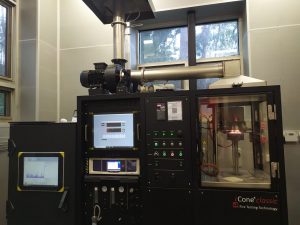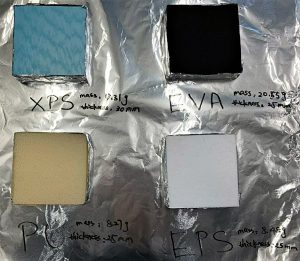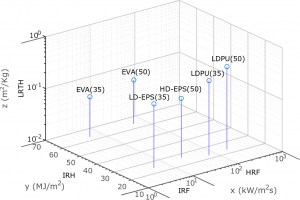Large building fires have continued to be a major threat to life, property, and the environment. The wide popularity of using highly flammable synthetic polymers and light alloys in modern high-rise buildings has amplified this threat. Smoke effluent during building fires has the potential to cause various toxicological effects in humans as it can contain a very complex mixture of gases, solid particulates, liquid aerosols, and free radicals. Further, the use of flame retardants (FR), additives and stabilizers in building materials may improve the fire performance in terms of time to ignition and heat release rate (HRR), but very less is known regarding the toxicity during combustion. While it may be argued that the use of FR can curb the size of fire, it is important to understand the toxicological synergies under various combustion conditions to regulate the use of fire safe materials in buildings.
In this project, a Cone Calorimeter instrument will be coupled with Fourier Transform Infrared Spectroscopy (FTIR) to perform a complete fire hazard assessment of combustible building and furnishing materials by considering both thermal and chemical aspects of fire. The FTIR will be used to continuously measure the concentration of various gases present in the fire effluent including carbon monoxide, oxygen depletion, carbon dioxide, hydrogen cyanide, halogenated hydrogen gases, oxides of nitrogen and sulphur, and some organic irritants, while the Cone Calorimeter will evaluate the flammability of materials. Further, thermal and toxicity data from the Cone Calorimeter and the FTIR will be used to evaluate the risk parameters of the combustible building materials for meaningful comparisons.
Research Topics
1. Bench scale fire hazard assessment of polymeric building materials using cone calorimeter and Fourier Transform Infrared Spectroscopy (FTIR)
2. Reduced scale fire tests and extraction data from light weight cladding composites








